A project.
Recently, at Corpus Christi, I recalled the story of the Eucharistic miracle at Bolsena during which a Host bled on a corporal, which spurred the institution of the feast. I got to thinking about corporals. A little light bulb went on.
Some of you might recall that, a couple years ago when I was in Rome, I posted about the wonderful corporals we have for Mass in many of the churches, for example, St. Peter’s Basilica (where I said daily Mass for many years) and at my adoptive Roman parish Ss. Trinità dei Pelegrini.
The corporals are hard starched, so much so that they have a glassy shine and are very stiff. This means that it is extremely easy to spot particles of the Host and lift them with the edge of the paten.
Here are a couple of photos of such a corporal in Rome.
Notice that it doesn’t yet want to lie flat.
Note the shine of the starch.
Folded.
I determined that I wanted to make corporals like this.
First, what is a corporal?
A corporal (from Latin corpus “body”) is a square white cloth of linen upon which the chalice with its paten and host, and also ciboria containing the smaller hosts are placed during the celebration of Holy Mass. The corporal is used whenever the Blessed Sacrament is taken out of the tabernacle, for example for exposition. If vessels are to be purified even – in the Novus Ordo – blech – at the credence table (i.e., not on the altar) a corporal is to be used. Hear that you priests out there? Redemptionis Sacramentum 119 we also see the importance of using the corporal.
Practical use. The first thing has to do with the priest’s intention at Mass to consecrate the Eucharist. Priests are to have the intention to consecrate the matter they know they want to consecrate. The usual way to help with this intention, to help make it explicit, is to place the matter to be consecrated on the corporal which is spread on the altar. If the priest has the intention to consecrate everything on the corporal, he’s good to go. He doesn’t have then to try to hold the specific intention for all the hosts in the ciborium as well. And if there are hosts nearby, but not on the corporal, in a storage box or vessel for another Mass, no problem.
The old De defectibus, section on defects, which was part and parcel of the Roman priest’s knowledge for centuries is helpful in this regard. There is a description of defects of intention:
“For that reason every priest should always have such an intention, namely the intention of consecrating all the hosts that have been Placed on the corporal before him for consecration.”
This is a priest’s moral intention.
Corporals shouldn’t be embroidered. These days they tent to have a little cross, supposedly because the priest is so dopey that he can’t figure out where to put the Host. Well.. these days… hmmm. It also could be there to help the priest get oriented for refolding the corporal properly. No, the corporal should not even have that little cross, but most do. As a matter of fact, the one I worked with for this project has the little cross.
Why don’t I like the little cross? Because in the TLM we place the consecrated Host directly on the corporal and only later slide the paten under it. Particles of the Host could be caught in the fibers of the embroidered cross. So, NO… no cross. When I have a corporal with a cross, I tend to turn it around so that it is at the top, and I place the chalice there.
The corporal’s main purpose, however, along with indicating what is to be consecrated, is to prevent the loss of particles from the Host. Should one fall, as sometimes happens because of it is dry or during the fractio rite, when it is broken, and the priest misses it, the way the corporal is folded will contain the host, as if with a little envelope… ne pereant. Folding the corporal correctly is important. So is way it is placed on the altar. To that end, preserving particles, the corporal is always gently scraped with the edge paten just before the Precious Blood is consumed, or perhaps if necessary at the time of the purification of vessels.
These people, for example, at a traditional web site GOT IT WRONG.
It’s upside down.
Then there are those who – I have seen this – leave the corporal on the altar. Even worse – I’ve seen this – some person preparing or tidying up – picks the unfolded corporal up and moves it or even shakes it. This is bad.
Another important discipline regarding the corporal pertains to all linens for Mass, including altar cloths. Linens should first be rinsed a few times by a priest and the water should go down the sacrarium on onto the ground.
Once you figure out what linens do, practically, these things naturally follow from our love.
Back to my project.
Year and years and years ago, I asked the Giuseppine nuns along the Tiber (who, by the way, to the linens for Ss. Trinità and San Pietro) how they accomplished the shine. Memory served. They use rice starch and Marseilles soap. They spread the corporal, imbued with the same, on glass or the equivalent, and let it dry. The oil in the soap helps to set the starch and allows you to peel the corporal off when dry.
So, my mise en place. The soap is 80% olive oil. Alas, there was only lavender scented at the store. And I was worried about the green coloring… but… this was an experiment to figure out the proportions to use.
Starch.
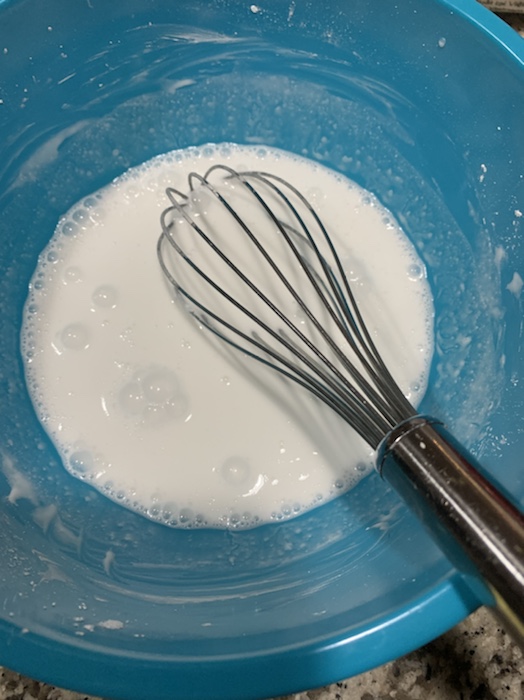
Shave soap.
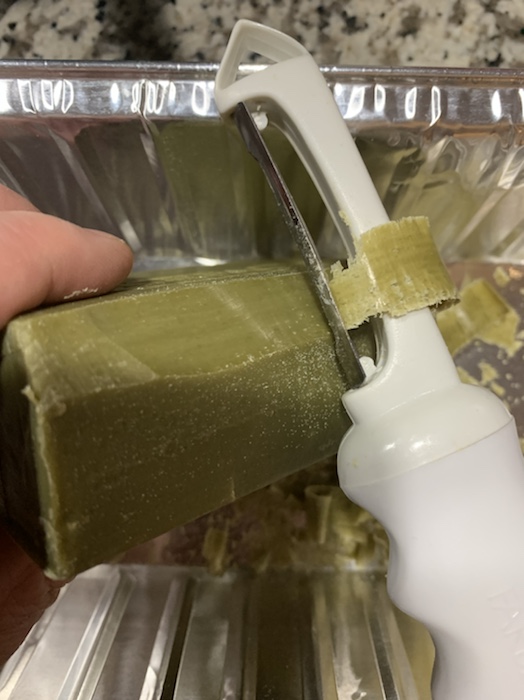
Into simmering water.
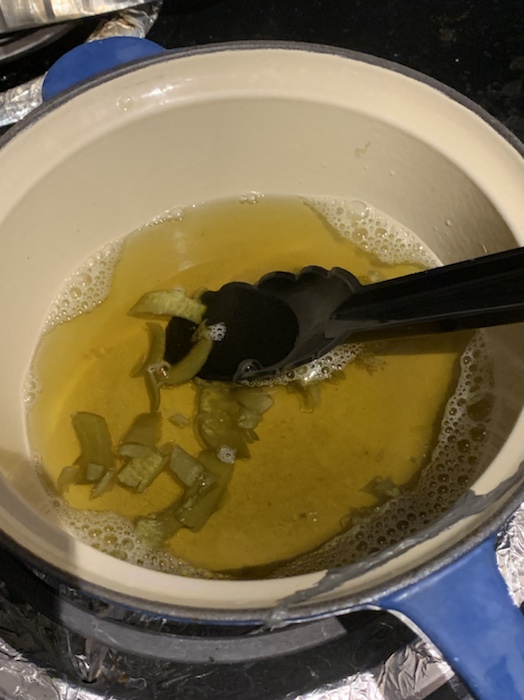
Start to add the starch in increments. It will eventually thicken.
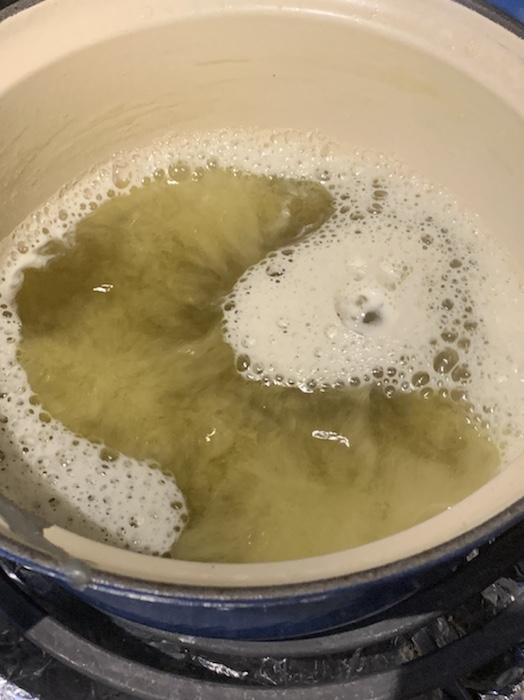
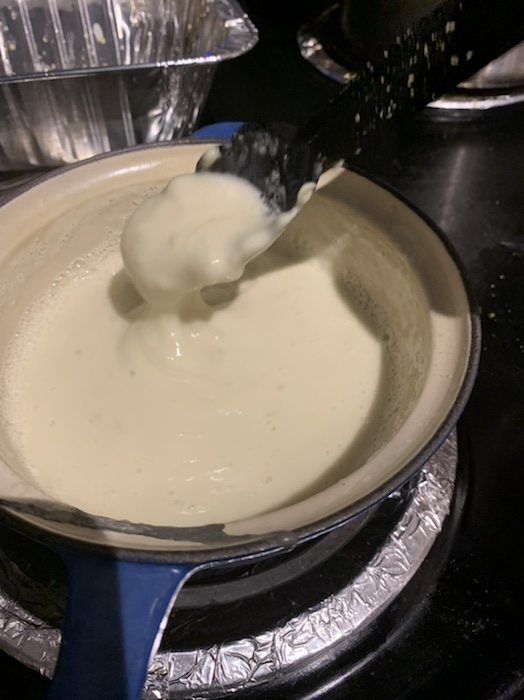
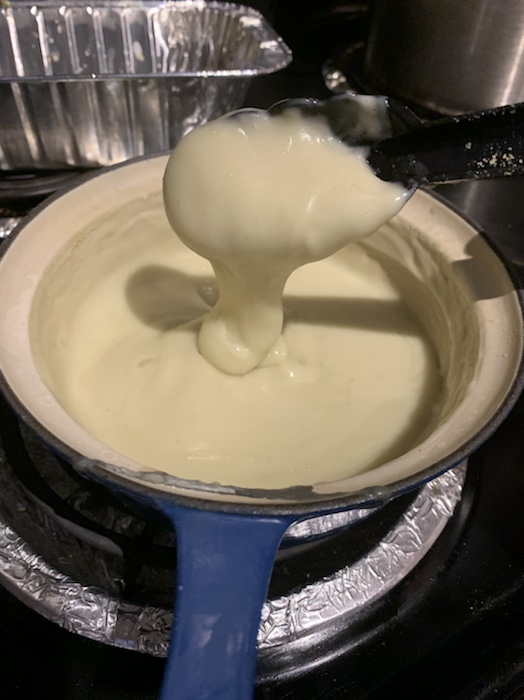
Yep… a little green.
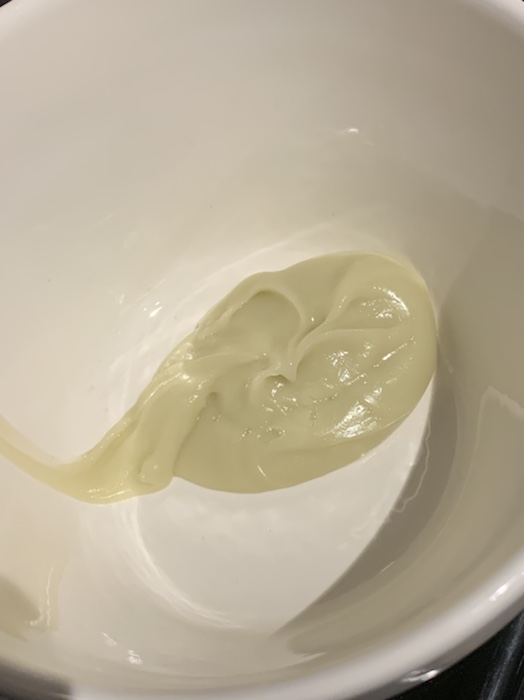
I bought a sheet of clear acrylic. Eventually I need a LOT more water on the right.
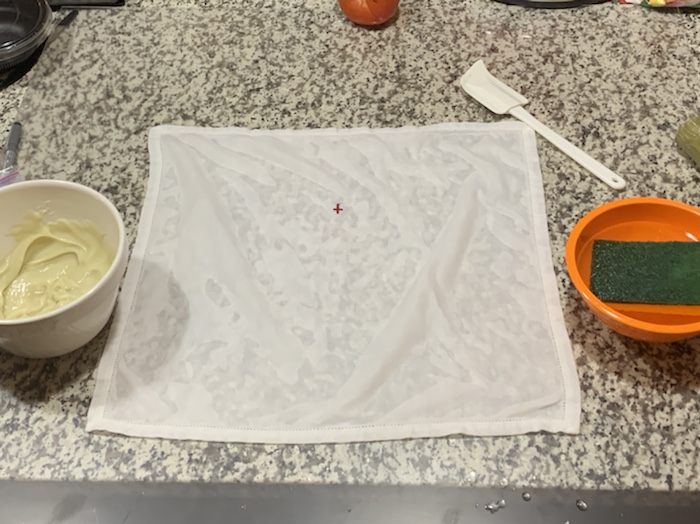
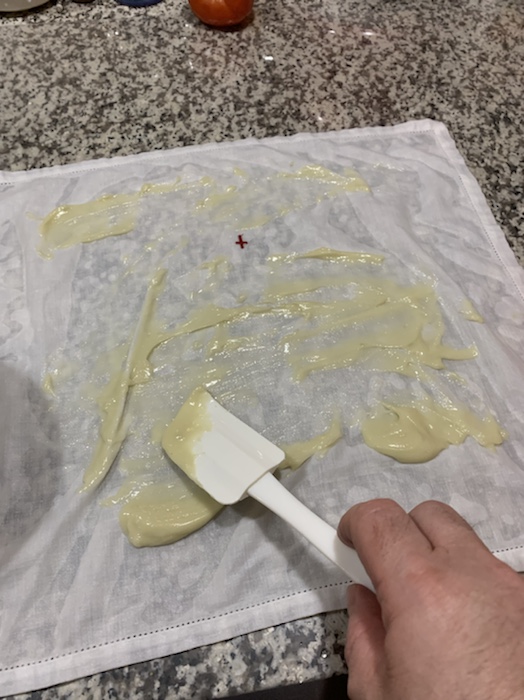
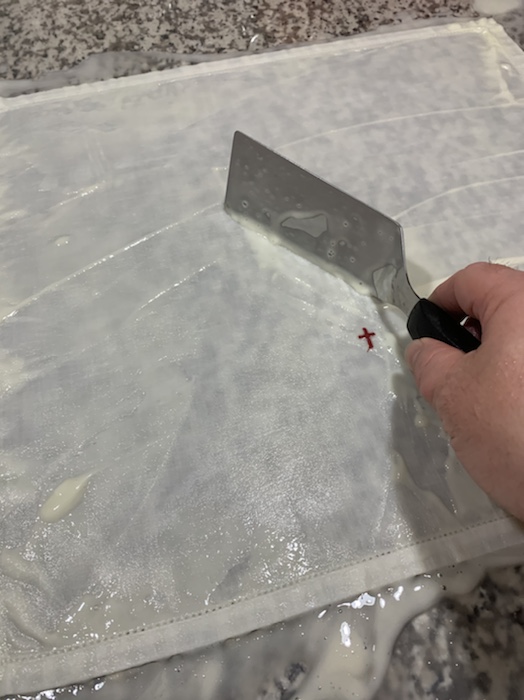
Get it really in there. Pick it up and do both sides well. Remember to put the business side DOWN. That’s the side that will have the desired glassy finish.
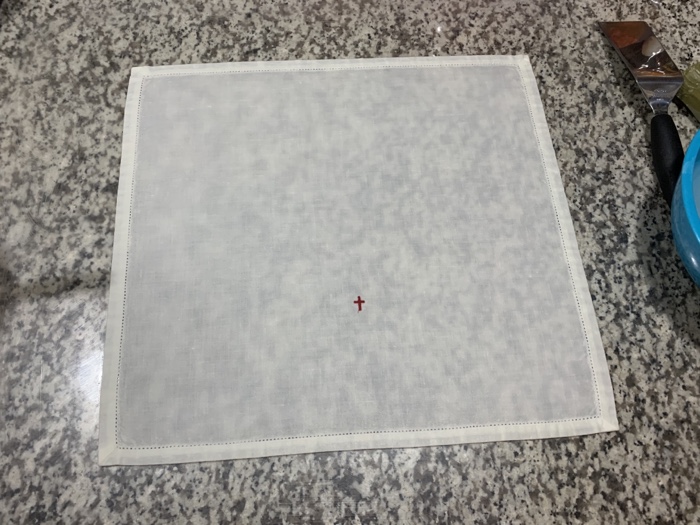
Set up to dry.
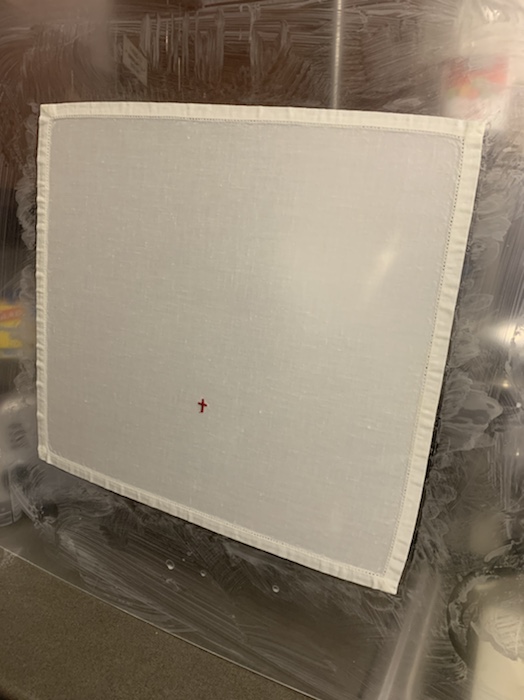
Next day… when dry… get out your Dremel tool.
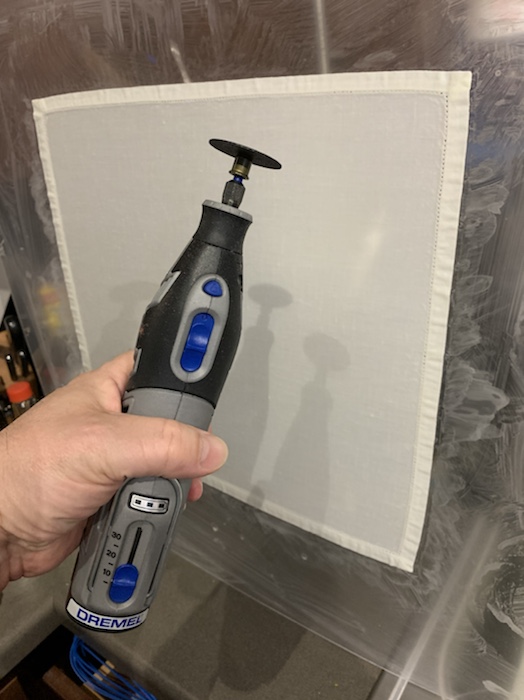
Just kidding. I didn’t use my Dremmel.
Peal it off.
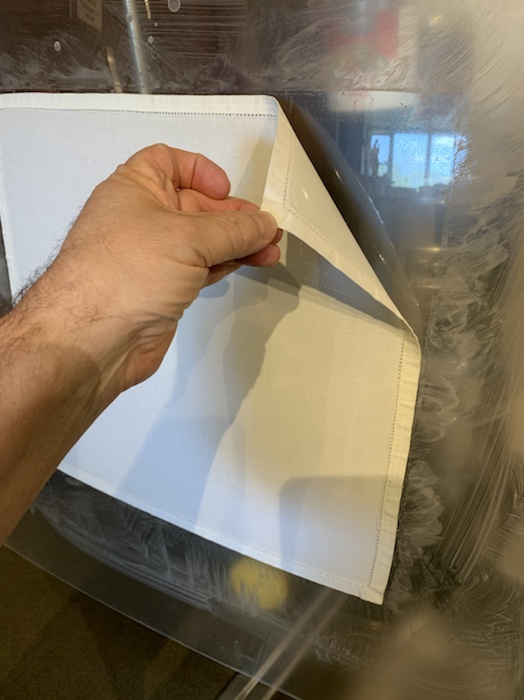
Ta daaah! Success the first time.
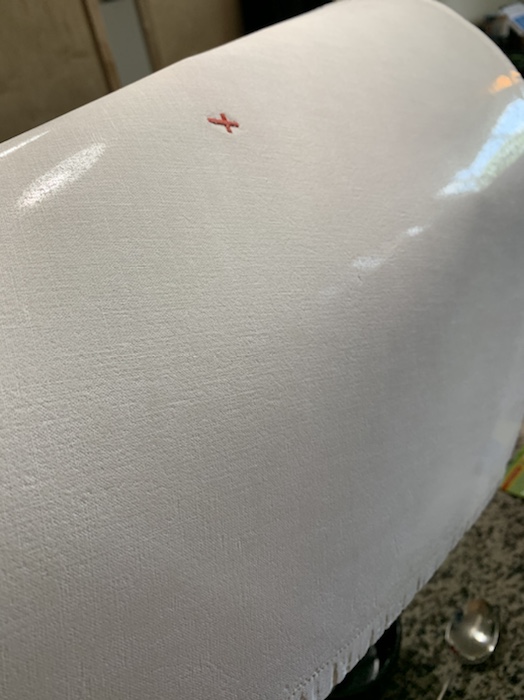
It has a slight green tint when compared to another corporal.
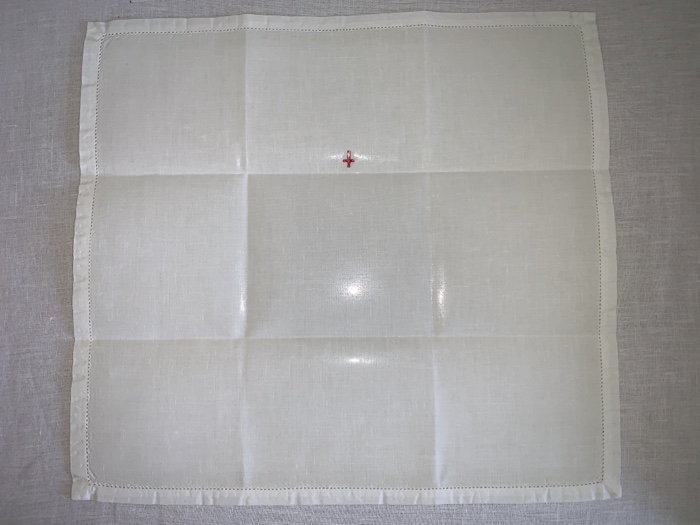
I will now be on the hunt for high percentage olive oil soap which is both without fragrance and coloring.
Now that I’ve done this once, it will be easy to do again.
I have a bunch more of the starch/soap paste in the fridge. However, I really want a new batch without coloring.
I am extremely pleased with the result and I will, tomorrow, use the corporal for Mass.
UPDATE:
Well look at this! A commentator alerted us about this video from the very Giuseppine I mentioned above. Italian. But it is clear. It looks like the soap they used was blue!

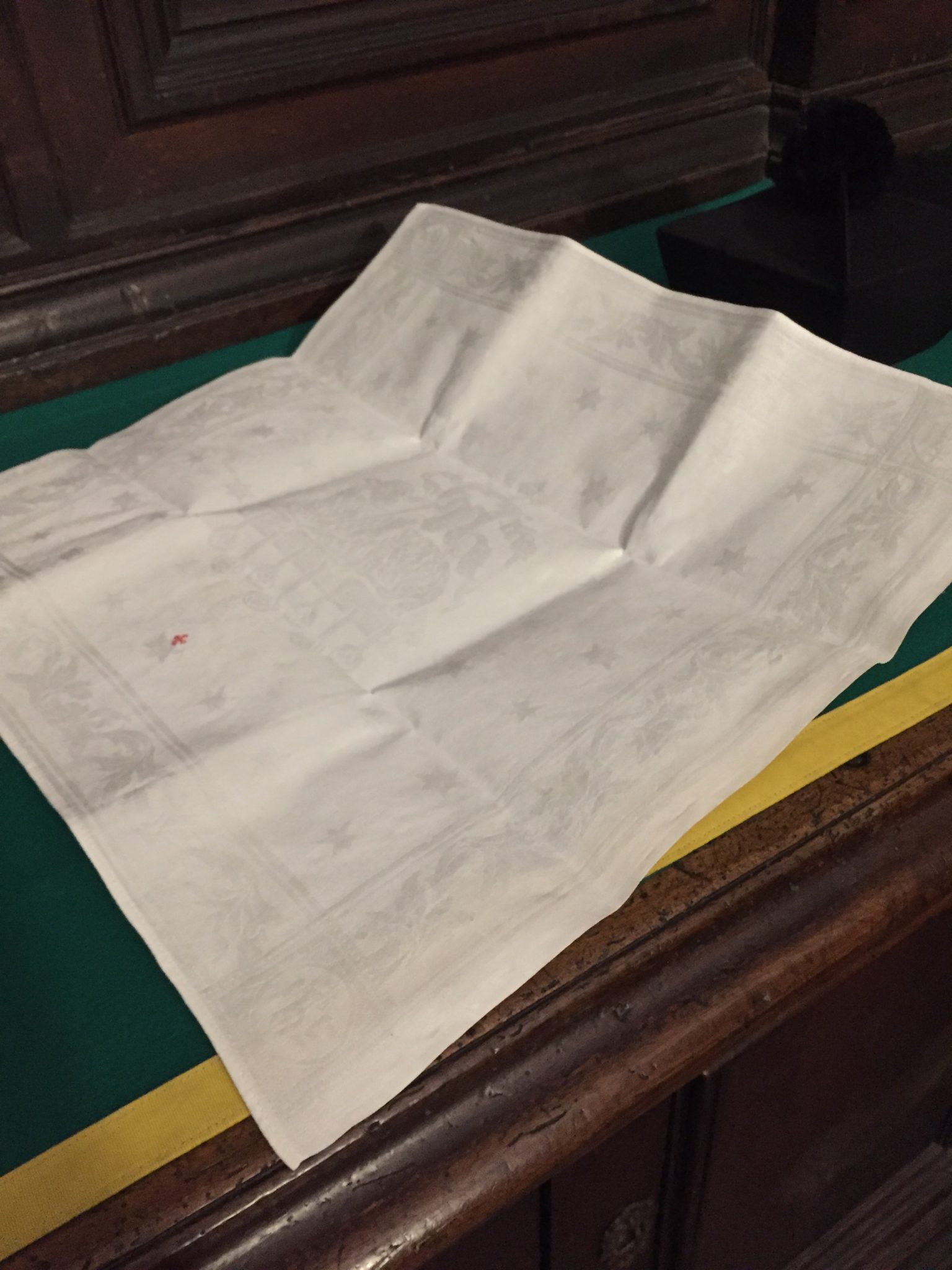
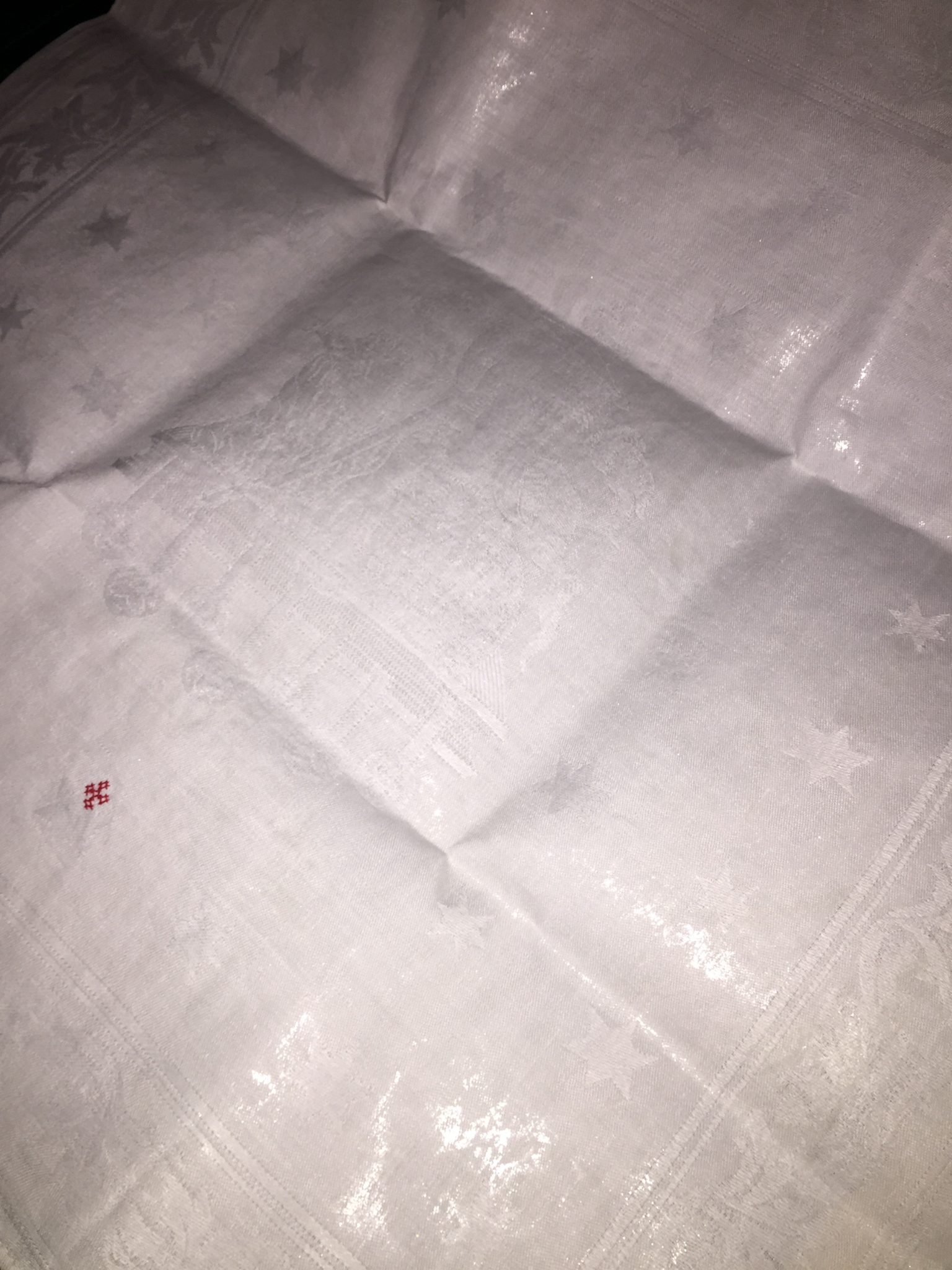
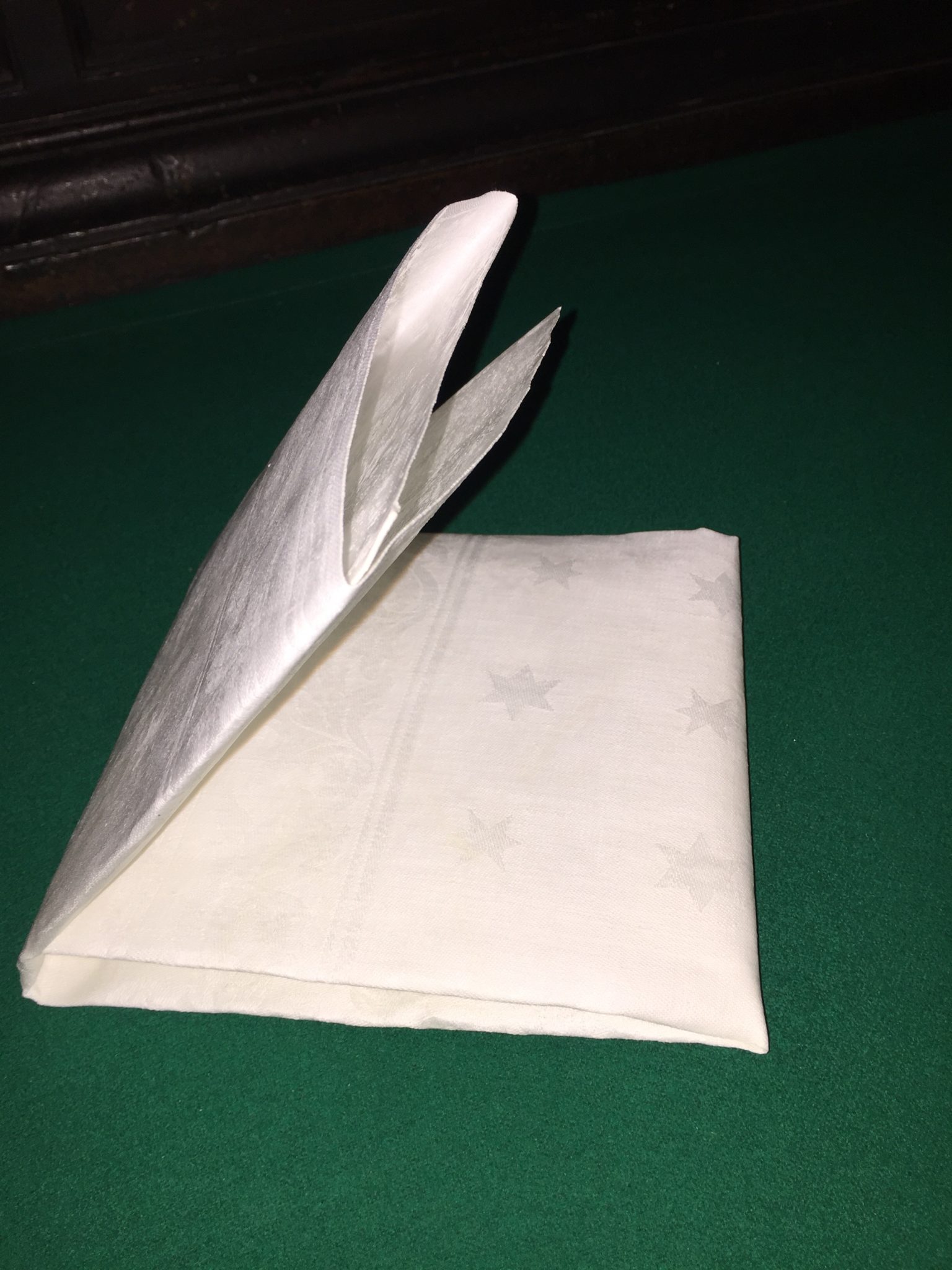
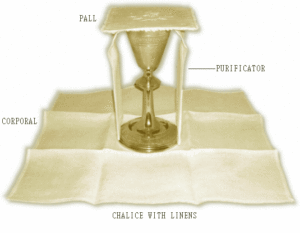
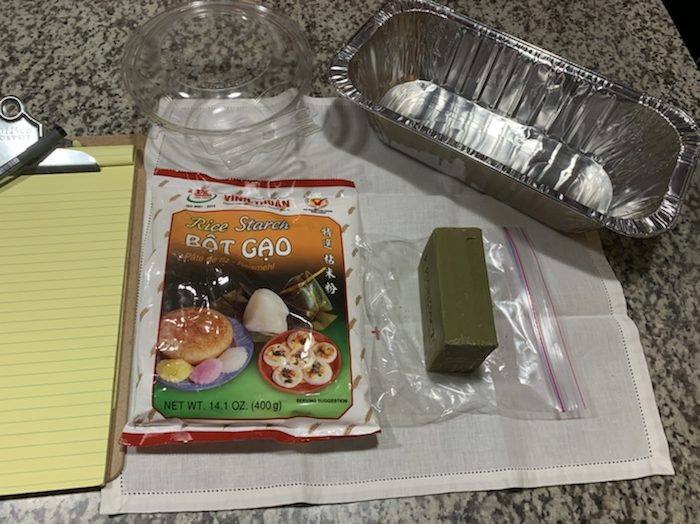

































Can the olive oil soap be a liquid? If it can, take a look at ASIN B00E78CFX6 .
Thank you! I’ve really wanted to know how that’s done. It’s an important element of Priestcraft, and you’ve probably just saved this knowledge from being lost to history.
Fascinating. (Though I assumed the crosses were there just to mark that it was an altar linen; I routinely see the same crosses on purificators too.)
Isn’t there a contradiction between “high percentage olive oil soap” and “without fragrance and coloring”? How does one bleach the color and fragrance out of the olive oil? I will be interested in what the comments here turn up.
I happened to notice the detail about sliding the Host under the paten on Sunday when I was watching the side camera, and I was a bit surprised. I’m curious to know the reason for that.
At my short stint with the Poor Clares, they laid out all of their linens on tables that had a smooth, laminate finish. They were so beautiful and perfectly “pressed” when dry! A laminate counter or table may be a little easier to come by than glass.
One more thing… during the drying process they would wet their fingers a couple of times and press down the hems, and they were just as smooth as the interior when completed. (I just noticed some wrinkling on the hems!)
A video of the great Figlie do San Giuseppe in action: https://youtu.be/W6DPavCQVto
HUGE pet peave. The corporal is backwards/upside down and father flips it over and over trying to get it the right way.
Hmmm… One of my late grandmother’s jobs at one point was as laundress for a convent. I will have to ask my mother and aunt if they recall whether her job included the church linens as well.
My mother was very active Rosary-Altar Society at one point, and I recall her ironing, but not much about washing. Also – much sewing, usually baptismal bibs/gowns.
–
Nice end product, Father. I must confess that my first thought was:
“I haven’t seen something so firmly starched since -”
https://umwtflucy.files.wordpress.com/2015/12/s02-e01-ricky-with-starched-silk-stocking.png?w=634
[I’m not quite sure what that says about you.]
That’s beautiful. I want to try that just because it looks so fun.
Oh, that’s a great tip! Thank you, Kate.
My brother owned a dry cleaners, and used laundry bluing on white shirts. It was added to the wash water. For some reason blue liquid makes white cloth appear brighter, so it makes sense the good sisters use a blue soap.
[Good tip.]
Father,
this is great! I planned to do this, but I had no idea about the olive oil soap, which seems to be essential. Thank you!
I personally do like the crosses, but not on the spot where the host is placed but more to the hem or even on the hem.
One thing I noticed in both the video of the good sisters and your photos from Rome: there are no hard creases in the highly starched corporals. I could imagine this helps to preserve the corporals for a longer time.
I am sure you are right about this. I suspect that many of the corporals in use at, for example, San Pietro, in the mornings by priests for daily Mass have been in service for years.
Father, depending on the grocery stores around you, you can often find Marseille soap and Castile soap (also high in olive oil) at Whole Foods or in another grocery store in the organic/natural section. I order my Marseille soap from Amazon, actually. Although, FYI, a lot of Marseille soap these days contains palm oil, which could make a difference.
Oops, forgot to add a note that I’ve been able to find the soap on Amazon without scents or dyes really easily.
Osmia Organics: oh-so-soap
Pacha Soap: pacha-nada (sold @ Whole Foods)
@ matthew:
From https://en.wikipedia.org/wiki/Bluing_(fabric) :
White fabrics acquire a slight color cast after use (usually grey or yellow). Since blue and yellow are complementary colors in the subtractive color model of color perception, adding a trace of blue color to the slightly off-white color of these fabrics makes them appear whiter. Laundry detergents may also use fluorescing agents to similar effect. Many white fabrics are blued during manufacturing. Bluing is not permanent and rinses out over time leaving dingy or yellowed whites. A commercial bluing product allows the consumer to add the bluing back into the fabric to restore whiteness.
Neat! I like to be able to get a paper-cut from my corporals.
Question: Are corporals supposed to be laundered immediately after one Mass, or could they be re-used? With all the work that goes into one corporal, it would seem like a lot of effort for just one Mass (not that one Mass isn’t worth all the effort, of course, but you all know what I mean).
I think someone told me once that Trimeloni’s compendium allows them to be laundered monthly. Any thoughts on this?
For those who want to do some somewhat elaborate prep, this is excellent. But, over the years, I have found that simple liquid starch (HERE) is fine. Just soak the corporal in it and spread it out on a piece of glass or smooth metal to dry. When done, fold and finger press to make the creases.
And to DBuote. I totally agree! If a priest cannot put the corporal into the burse or on top of the chalice with the folds in the right place to get the cross where it should be, PLEASE spare the laity the silly rotation of the corporal. And do penance for not doing proper preparation before Mass.
I haven’t checked Trimeloni on this. But that sounds reasonable, depending on how many times a day a corporal might be used. If it is not that often, then ….
To the Curate’s question: when I was a candidate living and being formed in a house of a traditional community (that is, a “PCED community”), I was the launderer. We didn’t use soap, but we did starch the corporals in a very similar way using our own starch; the Sta-flo was used on other goods in the house.
Corporals were replaced monthly, amices and purificators weekly.
If the laundry room is damp or humid in anyway, as is often the case in basements in the USA, then I recommend a carefully positioned fan; this greatly accelerates the time required to dry anything set out to get a glassy surface (corporals were not the only thing that I starched to get that smooth surface!). The tools would have been super-helpful. In any case, be careful once the corporal is wet; such delicate fabric is prone to tearing if you use your normal amount of force with even just your fingers when trying to smooth out the corporal and remove the excess amounts of liquid.
Also, instead of setting up individual sheets, the laundry room was equipped with two large sheets of Plexiglass that could be laid across a set of folding tables (I think card tables or something similar, and since it’s a sturdy, stable surface, it can be larger than the table itself.